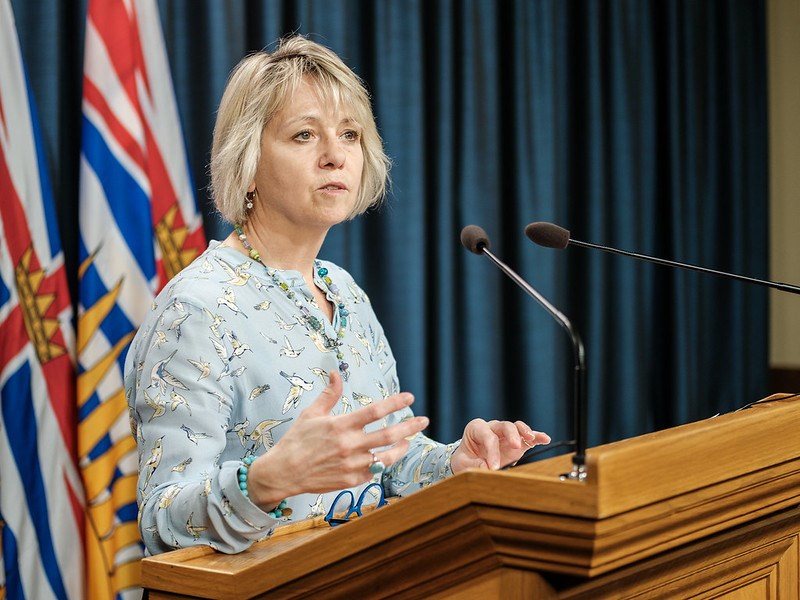There haven’t been any COVID-19 outbreaks in schools thanks to B.C.’s robust contact tracing system, Henry said.
“We do know our system is working because we are finding cases, we are finding smaller transmission events, and we’re isolating people and preventing outbreaks from happening,” she said.
Henry explained that an exposure is defined as an event where a single person attended the school during their infectious period. Health authorities are also determining when there is a cluster, meaning two or more people who are confirmed positive attended the school.
Meanwhile, an outbreak is when there is widespread transmission of the virus in the school, and it isn’t clear “who has been transmitting to whom,” she said.
Only close contacts, or people who are at risk, will be notified by public health, said Henry.
For example, she said, a parent may contract the virus and inadvertently pass it onto their child, before realizing they are ill. Likewise, the child may have mild symptoms or none at all.
And without any clear indicators of the virus, the child may then end up going to school, play on their sports team or hang out with friends after class, while they’re infectious.
But once the parent or child tests positive for the virus, public health steps in.
“Contact tracing then determines…who are the other family members that are at risk, who (are) the people the person spent time with outside of the school setting, and what happened in the school setting,” said Henry.
“From there, people are notified and required to self-isolate.”
She said the important thing is that health officials are managing the school environment to prevent transmission and the ongoing movement of the virus within the school, by making sure that those who are at risk are isolated during the 14-day incubation period.
Henry also acknowledged Thursday that there has been a learning curve when it comes to COVID-19 exposures in schools.
She said that health authorities were not “fully aligned” when it came to sharing information about exposures after classes resumed in September.
“I think it’s important to recognize that we don’t always get it right, right off,” she said.
“What was being said in one place was not always the same as what was said in other places. And we’re working through those kinks and continue to refine our approach.”
For instance, in the first weeks of class, not all health authorities were reporting school exposures online.
“I know that this has created some concern,” Henry said.
However, she said she is “confident” that health authorities are now aligned in their communications approach.



